This is our review of the best espresso machines with milk frothers. Read on to learn more.
I can’t live without my daily latte. To maintain this addiction, I went on a journey to find the best espresso machine with a milk frother.
I found the Rancilio Silvia best because of its good price and the great milk frother it has. Making it a great choice for someone without much counter space and who wants a long-lasting machine.
If it’s too high out of your price range, I’ve added many more high-quality, yet affordable, espresso makers with steamers.
Let’s make some milk-based drinks.
Top 9 Espresso Machines With Milk Frother
- Rancilio Silvia: Best Overall
- Rocket Espresso Appartamento: Best Performer
- Mr. Coffee Espresso Maker: Best for Budget
- Gaggia Classic Pro: Most Compact Machine
- PHILIPS 1200: Best Machine With Automatic Milk Frother
- De’Longhi Stilosa: Best Under $200
- Nespresso Creatista Pro: Best Nespresso Machine
- Breville Barista Express: Best Machine With Grinder & Milk Frother
- Sage Dual Boiler: Best Espresso Machine UK
9 Best Espresso Machines With Milk Frother for Home Use
Almost all espresso makers include milk frothers. However, I’ll cover many high-quality (and affordable) machines that include them. Or milk-related features to make better-tasting milk-based drinks.
You’d make these types of drinks from steaming or frothing milk. Resulting in espresso drinks like lattes, cappuccinos, mochas, and macchiatos.
Here’s a list that’ll help you understand acronyms better:
- Dimensions:
- D: depth
- W: width
- H: height
- PID = proportional integral derivative: monitors water temperature & makes minor adjustments to keep it to a set temperature.
- ESE = Easy Serve Espresso: pods with pre-ground beans to make brewing drinks easier.
Don’t understand anything else? You may find clarity under the buyer’s guide section. Otherwise, you’ll find the pros and cons, who each machine is best for, specifications, and more.
If you’re looking for commercial models, you can find all our espresso machines with milk frothers here.
1. Rancilio Silvia: Best Overall
![9 Best Espresso Machines With Milk Frother in [currentyear] 1 Rancilio Silvia M V6 Espresso Machine](https://timscoffee.com/wp-content/uploads/2023/04/Rancilio-Silvia-M-V6-Espresso-Machine.png)
| Price | $$$ |
| Type | Semi-automatic |
| Dimensions | 9.1 × 11 × 12.9 in (D, W, H) |
| Bars of Pressure | 15 bars |
| Boiler Type | Single |
| Warranty | 1 year |
| Milk Frother | Yes |
| Water Capacity | 10 oz = 10 solo shots |
| Material | Stainless steel |
Pros
- Robust machine
- Powerful steam wand
- Somewhat compact design
Cons
- No pressure & temp. gauges
- Tiny drip tray
- Uses a single boiler
The Rancilio Silvia works perfectly for anyone who wants a robust machine to make the best-tasting milk-based espresso drinks.
Semi-automatic machines automate applying water pressure and warming your boilers. Reducing the amount of manual input required. But it’ll heat tanks slower since it uses a single boiler. Making it a less-than-ideal choice for brewing many drinks back-to-back quickly.
The group head and portafilter are professional-grade. The first works with your machine to help the boiler heat more efficiently. The latter is the same size many coffee shops usually use. Making it easier for home brewers to replicate drinks frequently found in cafés.
But ensure you mind the drip tray. It’ll fill quickly. Something the boiler doesn’t do—boil fast. And due to the lack of temperature and pressure gauge, you’d need to guess when it’s time to brew. It’s not the most beginner-friendly machine.
Unless you invest in separate gauges.
However:
The steam wand’s design maximizes steam pressure and makes it easy to find an optimal position for your steam wand. Resulting in creamier and better-tasting microfoam (frothed/steamed milk)
2. Rocket Espresso Appartamento: Best Peformer
![9 Best Espresso Machines With Milk Frother in [currentyear] 2 rocket espresso appartamento nera espresso](https://timscoffee.com/wp-content/uploads/2023/05/rocket-espresso-appartamento-nera-espresso.png)
| Price | $$$$ |
| Type | Semi-automatic |
| Dimensions | 17 × 10 × 14 in (D, W, H) |
| Bars of Pressure | 13–14 bars |
| Boiler Type | Single |
| Warranty | 3 years |
| Milk Frother | Yes |
| Water Capacity | 101 fl oz = 101 solo shots |
| Material | Stainless steel |
Pros
- Can brew coffee & froth milk simultaneously
- Uses an E61 group head
- Compact size
Cons
- Doesn’t include pressure gauge
- Plastic cup rail
- Must perform cooling flush before brewing
Rocket Espresso’s Appartamento espresso machine works best for anyone who wants a compact device for smaller spaces. And who doesn’t mind long wait times for heating.
Semi-automatic machines are easier to use than manual makers, since they’ll boil water for you and automate pressure. But they’re more difficult than super-automatic machines since they require manual input.
A downside is that it uses a single boiler. This prevents you from frothing milk and brewing drinks simultaneously. It also heats water slower. And the E61 group head further slows the time it takes for your machine to heat.
It’ll last much longer than other group heads, though. Adding much more value to this machine. Considering the price, I wish there was a way to connect it directly to one’s plumbing. To eliminate the need for a water tank.
The included water tank is huge, though.
But it’ll only get up to 14 bars of pressure. Not ideal for bitter drink lovers. And if you wanted to see the pressure your machine exerts, you’d need to buy a separate pressure gauge.
You’ll notice it has a plastic rail to prevent cups from falling off the warmer. You could replace it with a stainless steel one. But that’ll cost around $100.
A cooling flush is when you flush water from the group head. It ensures temperature control and a clean group head. You’ll want to perform it with this machine, since leaving the heat exchangers idle can mess with the machine’s temperature.
Need something with more power? Check out the following recommendation.
3. Mr. Coffee Cafe Barista: Best Budget Espresso Machine With Milk Frother
![9 Best Espresso Machines With Milk Frother in [currentyear] 3 mr. coffee cafe barista](https://timscoffee.com/wp-content/uploads/2023/06/mr.-coffee-cafe-barista.png)
| Price | $ |
| Type | Semi-automatic |
| Dimensions | 8.8 × 11.2 × 12.6 in (D, W, H) |
| Bars of Pressure | 15 |
| Boiler Type | Single |
| Warranty | 1 year |
| Milk Frother | Yes |
| Water Capacity | 54 oz = 54 solo shots |
| Material | Stainless steel & plastic |
Pros
- Uses an automatic milk frother
- Affordable
- Milk container is easy to clean
Cons
- Milk frother is loud
- Unsightly
- May have inconsistent coffee taste
Mr. Coffee Cafe Barista works best for folks wanting an espresso machine that’ll automate milk frothing and cleaning. And who has a bit of extra kitchen counter space.
It’s a semi-automatic machine, which means you’ll control every aspect of making espresso except for boiling water and applying pressure to its portafilter. Ensuring you’ll have a more consistent-tasting drink.
However, the single water boiler will make this process take more time. These heaters don’t allow you to froth milk and make drinks simultaneously. And they take much longer to heat. Unideal for homes with multiple espresso drinkers.
Considering all the included features, the price tag fits this product.
So long as you don’t mind an eyesore sitting on your counter. The plastic elements (e.g., milk reservoir) look cheap. But that doesn’t matter if you’re frugal. What may cause concern is the noise the frother will produce.
Avoid making drinks when folks are sleeping. Then you’ll be fine.
Press a button once the machine finishes automatically frothing your milk, and it’ll clean the frother for you. Preventing you from wasting 10 minutes on maintenance after each drink. You’ll still need to descale the machine every couple months.
To prevent your drinks from tasting bad due to mineral buildup. Speaking of. Many have complained about inconsistent espresso from this machine. Since it doesn’t use high-quality parts like the former recommendations, that’s expected.
And you’re paying less than $300 for an espresso machine. What do you expect?
This next option is better for those living in smaller spaces.
4. Gaggia Classic Pro: Most Compact Espresso Machine With Frother
![9 Best Espresso Machines With Milk Frother in [currentyear] 4 Gaggia Classic Pro Espresso Machine](https://timscoffee.com/wp-content/uploads/2023/04/Gaggia-Classic-Pro-Espresso-Machine.png)
| Price | $$ |
| Type | Semi-automatic |
| Dimensions | 8 × 9.5 × 14.2 in (D, W, H) |
| Bars of Pressure | 15 bars |
| Boiler Type | Thermoblock |
| Warranty | 1 year |
| Milk Frother | Yes |
| Water Capacity | 71 fl oz = 71 solo shots |
| Material | Stainless steel |
Pros
- Takes 30 seconds for milk steamer to heat
- Supports ESE pods
- Steam wand rotates
Cons
- Must buy a separate grinder
- Requires a learning curve
- Harder to clean
The Gaggia Classic Pro is the best espresso machine under the $300 range. Due to Gaggia’s reputation, its ability to heat in fewer than 5 minutes, and that it’s more compact than most machines.
But it requires a bit of manual input. Considering it’s a semi-automatic machine. That means you must control every aspect of the espresso-making process. Except for applying water pressure and flow.
If this isn’t ideal, look a couple of sections further and find a device that automates espresso making.
I mentioned that it takes at most 5 minutes to reheat. That’s due to the thermoblock heater. It’s more energy efficient and controls temperature much better than single boilers. Since it uses embedded heating elements.
It’s not better than a double boiler, but finding a machine with such a feature in this price range is difficult.
Gaggia’s an excellent brand known for its long-lasting espresso products [1]. Considering all the quality-of-life features included and that you won’t likely need to replace your machine anytime soon, I highly recommend this machine.
The Classic Pro requires a separate grinder, which will cost you more money, kitchen space, and time (put into grinder maintenance). Unless you go with the ESE pods. If you didn’t read the beginning of this post, they’re pre-ground pods.
You’ll have less control over the beans in your drink unless you opt for making pods. Implementing another learning curve, but will save you space while maintaining customizability.
Otherwise, the steam wand is rotated (able), which gives you more control over your milk’s texture. Great for customizing steamed/frothed milk to your preference. And it’ll heat up in 30 seconds, reducing downtime between making frothed milk.
Great for impatient folks.
The biggest downside comes from not being able to remove the water tank. You must fill a separate pitcher to deliver water to your machine. And when it comes time to clean, you must dive into the machine.
This next pick will make milk frothing easier.
5. PHILIPS 1200: Best Espresso Machine With Automatic Milk Frother
![9 Best Espresso Machines With Milk Frother in [currentyear] 5 philips 1200](https://timscoffee.com/wp-content/uploads/2023/05/philips-1200.png)
| Price | $$ |
| Type | Super-automatic |
| Dimensions | 17 × 9.5 × 14.5 in (D, W, H) |
| Bars of Pressure | 9 bars |
| Boiler Type | Thermoblock |
| Warranty | 6 months |
| Milk Frother | Yes |
| Water Capacity | 60 fl oz = 60 solo shots |
| Material | Plastic |
Pros
- Includes ceramic bean grinder
- Programmable touch display options
- Affordable super-automatic machine
Cons
- It includes a ceramic bean grinder (double-edged sword)
- Cheap feel
- Recurring water filter premium
The Philips 1200 espresso machine makes a fantastic addition to homes wanting to make multiple drinks in a row. And it’s great for anyone who wants to make specific drinks by pressing a button.
The machine’s super-automatic (or fully-automatic) nature makes this possible. Meaning, it automates the entire espresso-making process. However, you lose control over customizing your drink’s shots.
It’ll heat quickly, though. Not as fast as a double boiler machine, but quicker than one with a single boiler. Further solidifying this choice as an excellent device for entertaining guests.
Philips is a “known” brand. And it’s the most affordable super-automatic grinder you’ll find.
Save yourself some money and get a semi-automatic machine and a separate grinder. Or use a Nespresso machine until you save enough for a decent machine with a grinder.
It’ll go up to 9 bars of pressure; not ideal for folks who love bitter drinks. And it has a lower-than-normal warranty, which doesn’t give me high hopes.
Probably a way to cut costs, which might explain why the machine has a plastic housing that feels “cheap.” Because of this, I worry that I’d break the machine by tapping it too hard. And despite including a coffee grinder, there’s another recurring expense.
The water filter. You must buy it separately. Don’t worry, you can still spend extra money with this machine.
Before moving forward, we need to address the ceramic elephant in the room. These burrs won’t heat like stainless steel; preventing them from heating beans and burning their taste. However, they won’t stay sharp as long.
And if they’re not sharp, they won’t produce consistent grinds. Thus, these burrs losing their sharpness could result in another expense.
Here’s another affordable pick.
6. De’Longhi Stilosa: Best Espresso Machine With Milk Frother Under $200
![9 Best Espresso Machines With Milk Frother in [currentyear] 6 DeLonghi Stilosa Espresso Machine](https://timscoffee.com/wp-content/uploads/2023/04/DeLonghi-Stilosa-Espresso-Machine.png)
| Price | $ |
| Type | Semi-automatic |
| Dimensions | 8.07 × 13.5 × 11.22 in (D, W, H) |
| Bars of Pressure | 15 bars |
| Boiler Type | Single |
| Warranty | 1 year |
| Milk Frother | Yes |
| Water Capacity | 33.8 fl oz = 33 solo shots |
| Material | Stainless steel & plastic |
Pros
- Quieter than most machines in price range
- Easy to operate
- Removable water tank
Cons
- Plastic exterior feels cheap
- Small pressurized baskets
- Not ideal for small spaces
The De’Longhi Stilosa works best for anyone wanting an affordable, yet easy-to-use espresso maker. One could say it’s also beginner-friendly. I’ll emphasize in a second.
Semi-automatic espresso makers preserve user control in every area of espresso making, except for applying pressure and boiling water. Allowing you to tailor drinks to your preference in most areas while preserving consistent temperatures and pressure.
It uses a single boiler, which means it’ll take longer to heat. And you can’t froth milk and make drinks at the same time. Bad for speed, but great for cost-savings.
Despite coming from a brand not noteworthy of stellar-quality products, you’re getting excellent value by paying under $150. It’s a decent-looking machine that brews espresso
The removable water tank makes refilling and cleaning the tank much easier. Since you don’t need to grab a scrubber and dig into your machine. You’ll notice how it only has a knob and a couple of LED indicators.
And they’re easy to understand. A welcomed design choice for beginner home baristas.
But it’s not so great for beginners living in small homes. The machine’s pretty wide. However, the pressurized basket is smaller than most machines. With a smaller pressurized basket, achieving a proper flow rate is more difficult.
This could negatively affect your drink taste’s consistency.
You shouldn’t buy cheap if you’re after a super-durable espresso machine. Because companies need to cut corners somewhere. De’Longhi did so by having a plastic case with a metal finish. This will impact your machine’s lifespan.
Since it can’t resist wear and tear as well as stainless steel.
The next machine will automate brewing milk-based drinks.
7. Nespresso Creatista Pro: Best Nespresso Machine With Milk Frother
![9 Best Espresso Machines With Milk Frother in [currentyear] 7 breville nespresso creatista pro](https://timscoffee.com/wp-content/uploads/2023/06/breville-nespresso-creatista-pro.png)
| Price | $$$ |
| Type | Capsule |
| Dimensions | 6.7 × 16.1 × 12.2 in (D, W, H) |
| Bars of Pressure | 19 |
| Warranty | 2 years |
| Milk Frother | Yes |
| Water Capacity | 60 fl oz = 7 cups |
| Material | Stainless steel |
Pros
- Automatic self-cleaning steam wand
- Multiple textures for milk froth
- Pre-programmed drink settings
Cons
- Using plant-based milk demands more practice
- Pod chamber doesn’t automatically clear
The Breville Nespresso Creatista Pro works best for anyone wanting a long-lasting capsule machine that has a milk wand similar to what traditional espresso machines include.
Capsule espresso machines take pods you enter into their machines and turn them into black coffee or espresso. The way it’ll brew the pod depends on its specifications. For instance, if it’s a lungo pod, the machine will brew a watered-down espresso shot.
The stainless steel body and various quality-of-life features come at a high premium, but it’s worth the price. If you’re more “destructive” with Nespresso machines, you may save money by not having to replace the plastic counterparts continually.
Plant-based milks are harder to froth due to having fewer proteins than whole milk. Usually resulting in watery (or no) milk foam. But it’s possible to froth. It’ll take practice to adjust to using dairy-free milks with this machine.
As with any other milk frother.
Are you lazy like me sometimes when it comes to making coffee? Yes? Use the LCD to choose from the following drink settings:
- Espresso
- Lungo
- Flat white
- Cappuccino
- Cafe latte
- Latte
- Macchiato
- Hot milk
It’ll adjust its automatic milk texture(er) to match each drink’s settings. For instance, lattes demand bigger foam bubbles than cappuccinos. Once done, the wand will clean itself. Reducing the need for maintenance.
But the Nespresso pod won’t automatically eject. A feature that should come in a device this pricey.
Not into this type of automation? Here’s an alternative.
8. Breville Barista Express: Best Espresso Machine With Grinder & Milk Frother
![9 Best Espresso Machines With Milk Frother in [currentyear] 8 Breville Barista Express Espesso Machine](https://timscoffee.com/wp-content/uploads/2023/04/Breville-Barista-Express-Espesso-Machine.png)
| Price | $$$ |
| Type | Super-automatic |
| Dimensions | 13.8 × 12.5 × 15.9 in (D, W, H) |
| Bars of Pressure | 9–15 bars |
| Boiler Type | Thermocoil |
| Warranty | 1 year |
| Milk Frother | Yes |
| Water Capacity | 67 fl oz = 67 solo shots |
| Material | Stainless steel |
Pros
- Digital temperature control
- Includes pre-infusion
Cons
- Can’t control milk frother temperature
- Water tank is difficult to access
The Breville Barista Express works best for anyone that wants an affordable machine with top-tier features (pre-infusion).
Super-automatic machines do all the work for you. Making it an ideal solution for homes that want to entertain guests, offices, or company break rooms. Since they can produce consistent drinks quicker.
The addition of Breville’s thermocoil further cements my point. As it’ll heat the machine in 3 seconds.
Considering Breville machines with pre-infusion could cost over $1,000, this machine holds its value well.
Pre-infusion is when the machine gradually applies water pressure to beans. This helps ensure even extraction to optimize your drink’s flavor. Speaking of water, the tank is a pain to access. It’s stuck on the back of the machine and immovable.
This will require you to deliver water via pitchers.
But the digital temperature controls are easily readable and can make tinkering with your drink’s temperature easier. I wish I could say the same for their frother. Because you can’t adjust its temperature.
Let’s talk about the grinder. It uses steel conical burrs, which are okay. Steel burrs heat up quickly and can damage your beans, making them more bitter [2]. They’ll last longer than ceramic burrs since they don’t heat up as quickly.
Many high-quality espresso grinders use flat burrs. These help ensure consistent grind sizes, which will help improve your drink’s extraction. Conical burrs are okay, but won’t significantly increase the appliance’s cost like its counterpart.
This goes out to you folks in the United Kingdom.
9. Sage Dual Boiler: Best Espresso Machine With Milk Frother UK
![9 Best Espresso Machines With Milk Frother in [currentyear] 9 sage dual boiler](https://timscoffee.com/wp-content/uploads/2023/06/sage-dual-boiler.png)
| Price | ££££ |
| Type | Semi-automatic |
| Dimensions | 40.5 × 37.8 × 37.7 cm (D, W, H) |
| Bars of Pressure | 15 bars |
| Boiler Type | Dual boiler |
| Warranty | 2 years |
| Milk Frother | Yes |
| Water Capacity | 2.4 l = 84 solo shots |
| Material | Stainless steel |
Pros
- Includes pre-infusion
- Heats fast
- Can swivel wand 360 degrees
Cons
- Requires a lot of space
- Can’t adjust drip tray
The Sage Dual Boiler’s a fantastic choice for those in the United Kingdom because of Breville/Sage’s great international warranty. And including a dual boiler makes this machine excellent for brewing drinks quickly.
Semi-automatic machines preserve most user control over tailoring drinks to their taste. Except in water pressure and boiling. The parts it automates ensure consistency and make the machine type easier to use than manual makers.
And it includes a dual boiler. It’ll produce drinks quicker by heating your machine quicker, and allows you to brew coffee and froth milk simultaneously.
It’s a bit pricey, but it includes a dual boiler and pre-infusion. Features that would usually bring such machines over £1,500. I’d say it’s worth the price.
So long as you have enough counter space to fit it. Because it demands a lot of room. And if you can fit this, you’re in luck. It’ll warm up fast, which allows you to brew drinks quicker.
The pre-infusion feature helps evenly moisten your coffee beans to enhance flavor extraction. I don’t need to emphasize on this point. But I do need to talk about the drip tray. Despite being capable of making double shots, you can’t adjust the drip tray.
This downside also increases the likelihood of splashing when using your machine. Keep a towel nearby to wipe down any splashes.
And the Dual Boiler includes a 360-degree steam wand. Giving you maximum control over your milk froth’s texture. And taste.
That’s all.
How to Choose the Best Espresso Machine With Milk Frother
Here’s how to shop for an espresso machine:
| Checklist | Why it’s Important |
| Water Pressure | Critical for rich flavor & creamy froth. |
| Ease of Use | Effortless brewing & frothing experience. |
| Time to Heat | Quick heating for prompt preparation. |
| Design | Aesthetically pleasing machine complements any space. |
| Price | Balance of affordability & desired features. |
| Brewing Capabilities | Versatility for various coffee creations. |
| Additional Features | Enhance convenience & customization options. |
Explore the following sections to learn how to buy the best espresso maker with a milk frother. I’ll cover a bunch of features to help you find a machine that’ll fit your needs.
1. Water Pressure
- <7 bars: under-extracted; super sour
- 7–9 bars: Mild flavor & a bit sour
- 9 bars: sweet spot; balanced flavor & excellent starting point
- 15 bars: stronger-tasting drink, but not too bitter
- >15 bars: over-extracted drink; excessively bitter
A good steam wand needs at least 1.2 bars of pressure to heat and aerate the milk. Otherwise, you’ll have inconsistent milk froth that’ll lead to weird-tasting milk-based drinks. Many espresso machines with milk frothers have this amount of pressure.
When it comes to coffee extraction, too much pressure can lead to over-extraction, causing the coffee to taste bitter. Espresso machines with milk frothers usually offer up to 15 bars of pressure.
It’ll use about 9 bars for the actual extraction process.
Using more pressure forces the water through the coffee grounds too quickly, not allowing the proper flavors to develop and instead pulling out the more bitter compounds.
2. Time to Heat
- Temperature control: Maintains machine temperature.
- Boiler type: Time it takes to heat the machine.
- Time to heat frother: Time it takes to heat milk frother/steamer.
To brew tasty espresso, water must be between 195 and 205 ° F [3]. Too hot or too cold, and the coffee tastes off, either bitter or dull.
Boilers in espresso machines manage temperature. And here’s a comparison containing some different types available:
- Double boilers (best): Heats the quickest.
- Thermoblock (runner-up): Balances price & speed.
- Single boiler (worst): Heats the slowest.
Heating a milk frother often takes 1 to 2 minutes. This is important for users who like milk-based drinks like lattes or cappuccinos. Faster heating means quicker drinks.
Espresso machines with milk frothers usually control temperature through thermostats or thermocoils. They typically have single boilers, although higher-end models may feature dual boilers.
3. Design
- Size: Compact(ness)
- Aesthetics: Whether it looks good.
- Materials: Stronger materials equals longer lifespan.
- Water reservoir size: Determines time required before next refill.
Espresso machines with milk frothers come in a variety of sizes, but many are quite compact. Size matters in small kitchens as counter space is at a premium. Compact machines fit better, leaving more room for other appliances and food preparation.
These machines often use materials like stainless steel and plastic. Stainless steel is durable and heat-resistant, making it ideal for espresso machines. Plastic is lighter and less expensive, though it may only last for a short time.
Aesthetics are important too. Many espresso machines with milk frothers look good. They frequently feature sleek, modern designs that match your kitchen decor and come in various colors.
High-quality materials and finishes add to the machine’s visual appeal, making it a stylish addition to your countertop.
4. Ease of Use
Make cleaning easier by keeping an eye out for these features:
- Touchscreen interface: Allows you to choose programmed drinks.
- Removable components: Makes cleaning & maintenance easier.
- Descaling notification: Notifies you when it’s time to descale.
- Automatic descaling: Descales your machine for you.
Touchscreen interfaces aren’t standard in all espresso machines with a milk frother. However, some high-end models include this feature for a more user-friendly experience.
Removable components are a common feature across most espresso machines with milk frothers. They allow easy cleaning and maintenance, contributing to the machine’s lifespan and performance.
Descaling notifications and automatic descaling are found in many, but not all, machines with milk frothers. More advanced or high-end machines typically include these features for ease of maintenance.
The former feature alerts you when it’s time to remove mineral buildup in the machine. This matters because minerals from water can accumulate over time, affecting the machine’s functionality and the taste of your espresso.
The latter simplifies maintenance by cleaning the machine for you. It not only saves your time but also ensures the machine gets cleaned properly. This extends the life of your machine and preserves the quality of your espresso.
5. Coffee Machine with Grinder vs. Separate Grinder
The following sections will help you determine whether getting a separate grinder is better than a built-in one.
Read on to learn more.
1. Built-in Grinder
Some espresso machines with milk frothers have built-in grinders. A built-in grinder brings benefits like ensuring fresh coffee grounds for every brew and saving counter space as there’s no need for a separate grinder.
While built-in grinders offer notable advantages, it’s equally important to consider potential downsides.
Let’s transition into discussing the pros and cons of using a built-in grinder in an espresso machine:
Pros:
- Peak Flavor: Delivers coffee freshness by grinding on demand.
- Ensures peak coffee flavor by preserving the volatile compounds responsible for aroma & taste.
- Compact Design: Integrates grinder & brewer into one appliance.
- Conserves countertop real estate, a vital factor for smaller kitchens.
- Unified Operation: Ensures a swift transition from grinding to brewing.
- Simplifies your espresso routine, allowing for a smoother & faster preparation.
Cons:
- Grinder Restriction: Confines the use of the grinder to the espresso machine.
- Restricts your grinder’s usage for other coffee-related activities, reducing its overall utility.
- All-in-One Risk: Exposes the entire machine to breakdown if the grinder fails.
- Issues with the built-in grinder could compromise the whole unit, potentially leading to costly servicing or replacement.
- Cleaning Complexity: Adds a layer of difficulty to upkeep..
Let’s move forward.
2. Separate Grinder
Most super-automatic (sometimes automatic) machines have built-in grinders. Without those, you’re stuck with semi-automatic ones.
This will result in the best taste due to having more consistent grinds.
Let’s dive deeper:
Pros:
- Versatile Use: Adjusts grinder settings for diverse brewing techniques.
- Isolated Functionality: Espresso machine remains operable if grinder fails.
- Simplified Maintenance: Eases cleaning process.
- Usually present accessible parts, facilitating cleanliness and consistent flavor.
Cons:
- Increased Footprint: Consumes more countertop real estate.
- Higher Expense: Elevates total coffee equipment cost.
- Extra Handling: Introduces an additional step to brewing.
- Manually moving coffee to the espresso machine may prolong the coffee preparation process.
To conserve space, get pre-ground beans or ESE pods. Otherwise, you will need a separate grinder.
6. Brewing Capabilities
All espresso machines with milk frothers can make these drinks:
| Americano | Cortado | Long macchiato |
| Black Eye | Guillermo | Rápido y Sucio |
| Cappuccino | Galão | Café Crema |
| Dripped Eye | Irish Coffee | Freddo Cappuccino |
| Flat White | Café Medici | Affogato al Caffe |
| Latte | Café Breve | Mocha |
| Lazy Eye | Vienna Coffee | Cubano |
| Manilo Long Black | Macchiato | Zorro |
| Red Eye | Espresso Romano | Marocchino |
Many super-automatic machines offer programmable settings that’ll automatically tailor the machine’s settings to make some drinks (e.g., Americano). But that’ll make the cost much higher.
7. Quality-of-life Features
Let’s compare a bunch of luxury features:
| Feature | Description | Best For |
| Pre-Infusion | Lightly wets coffee grounds, improving flavor extraction. | Flavor quality |
| Cup Warmers | Prevents espresso from cooling fast. | Temperature maintenance |
| Programmable Settings | Alter espresso traits like strength and volume. | Customization |
| Automatic Tamping | Apply ideal pressure on coffee. | Consistent brew |
| PID Temperature Controller | Keeps the brewing temperature precise. | Taste precision |
Espresso machines with milk frothers range widely in features. Some models, especially more advanced ones, may include all these features, while others may not.
You’ll find pre-infusion and PID temperature controllers in higher-end espresso machines with milk frothers. These machines aim to provide a more exact brewing experience with better flavor control.
Programmable settings are also more commonly found in these advanced models. Users who want to fine-tune their brew to their liking will find this feature beneficial.
Automatic tamping is less common and is more often found in high-end or commercial machines. Nonetheless, some espresso machines with milk frothers might have this feature.
Cup warmers are a feature that doesn’t directly affect the brewing process but enhances the drinking experience by keeping the espresso warm for a longer period. Some models might include this feature, especially those in the higher price range.
4 Types of Espresso Machines With Milk Frothers Compared
Here are all the types of espresso machines that’ll include milk frothers:
| Machine Type | What it Automates | Best for |
| Super-automatic | Everything | Automated traditional espresso |
| Semi-automatic | Pressure & water flow | Graduating from manual machines |
| Automatic | Grinding, tamping, & brewing | Balancing cost & automation |
| Capsule | Everything | Convenience, cost, & speed |
I’ll compare each machine’s average price, what it automates, and why it’s better than their counterparts. This section should help you understand the type of espresso machine you’ll want.
1. Super-automatic / Fully-automatic Machines
- Average price: $800–$5,000 (varies by model).
- Automation: Grinding, brewing, water flow, & pressure.
- Advantages: Top-notch convenience, consistency, & variety.
Fully-automatic machines do all the espresso making for you. Only leaving you to pour beans in the hopper and select what you want. It’s best for anyone wanting drinks quicker or who frequently entertain guests.
All super-automatic machines include milk frothers. If it didn’t then I don’t know what category it would fall under.
2. Semi-automatic Machines
- Average price: $200–$2,000 (varies by model).
- Automation: Pressure & water flow.
- Advantages: Control, consistency, & user-friendliness.
These types of machines require manual input in most espresso-making steps, except for water flow and pressure. They also include water boilers, which prevents you from having to boil and carry water from a separate kettle.
It’s a great option for someone wanting to save a bit of money, who doesn’t mind sacrificing automation, and who wants more control over their drinks.
Every semi-automatic machine I’ve seen includes a milk frother and steamer.
3. Automatic Machines
- Average price: $300–$3,000 (varies by model).
- Automation: Pressure, water flow, & shot timing.
- Advantages: Consistency, time-saving, & ease of use.
Automatic machines automate most espresso-making steps except grinding and frothing. They balance cost, speed, and control, which makes them a fantastic choice for folks who don’t want too much control or automation with their drinks.
All automatic machines will include milk frothers.
4. Capsule Machines
- Average price: $100–$700 (varies by machine).
- Automation: Brewing & water flow.
- Advantages: Simplicity, consistency, & minimal mess.
Capsule espresso machines require you to place a pod in an outlet, then read it for brewing instructions. From there, it’ll brew your drink. Making it a perfect solution for anyone lazy to brew espresso. Or for those constantly short on time.
Most capsule machines don’t have built-in milk frothers or steamers. Ones that do will usually cost over $300.
FAQs for Best Espresso Machine With Milk Frother
Keep reading to find frequently asked questions surrounding espresso machines with milk frothers and steamers.
Do Espresso Machines Have Milk Frothers?
Yes. Almost all espresso machines you’ll find have milk frothers.
Which Nespresso Has a Built-in Frother?
A couple Nespresso product lines that include milk frothers are the Gran Lattissima and Creatista.
Our Verdict
Here are the best 3:
- Rancilio Silvia: Best overall.
- Rocket Espresso Appartamento: Compact & includes E61 group head.
- Mr. Coffee Espresso Maker: Affordable machine with automatic milk frother.
I chose Rocket Espresso’s Appartamento machine due to its compact(ness) and durability because of high-quality components.
If none of these machines live up to your standards, check out our other espresso maker recommendations.

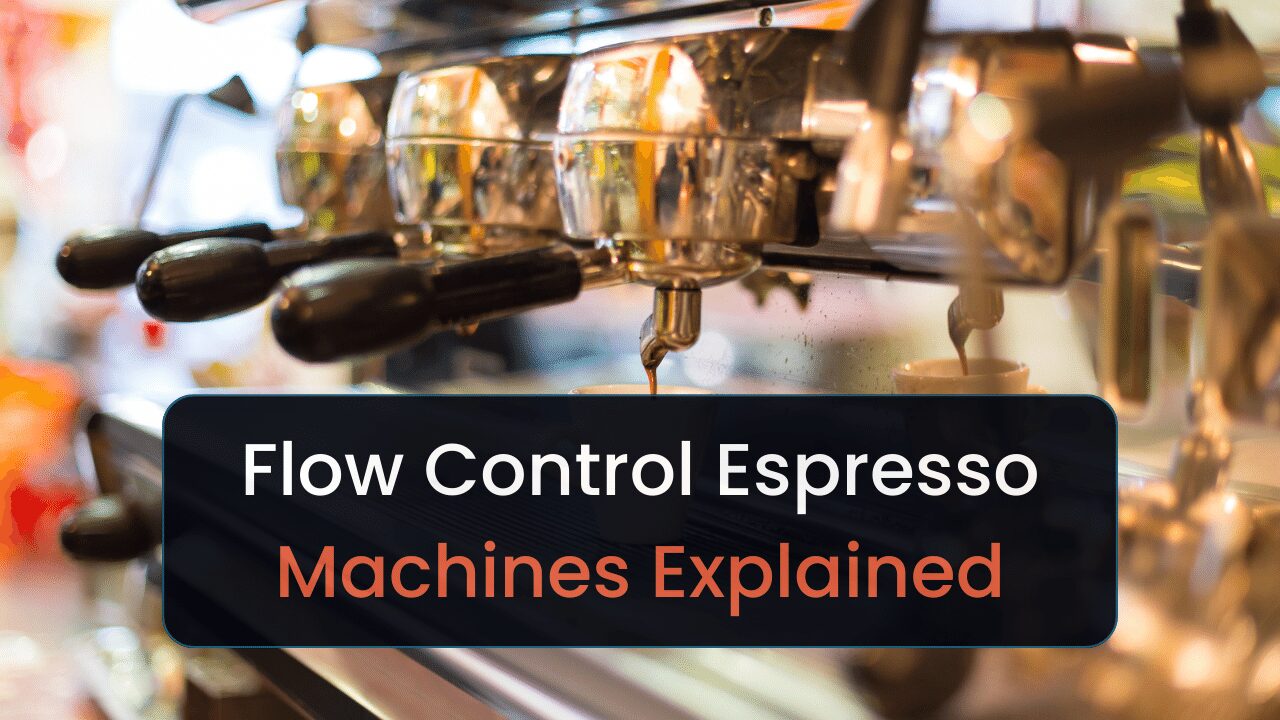
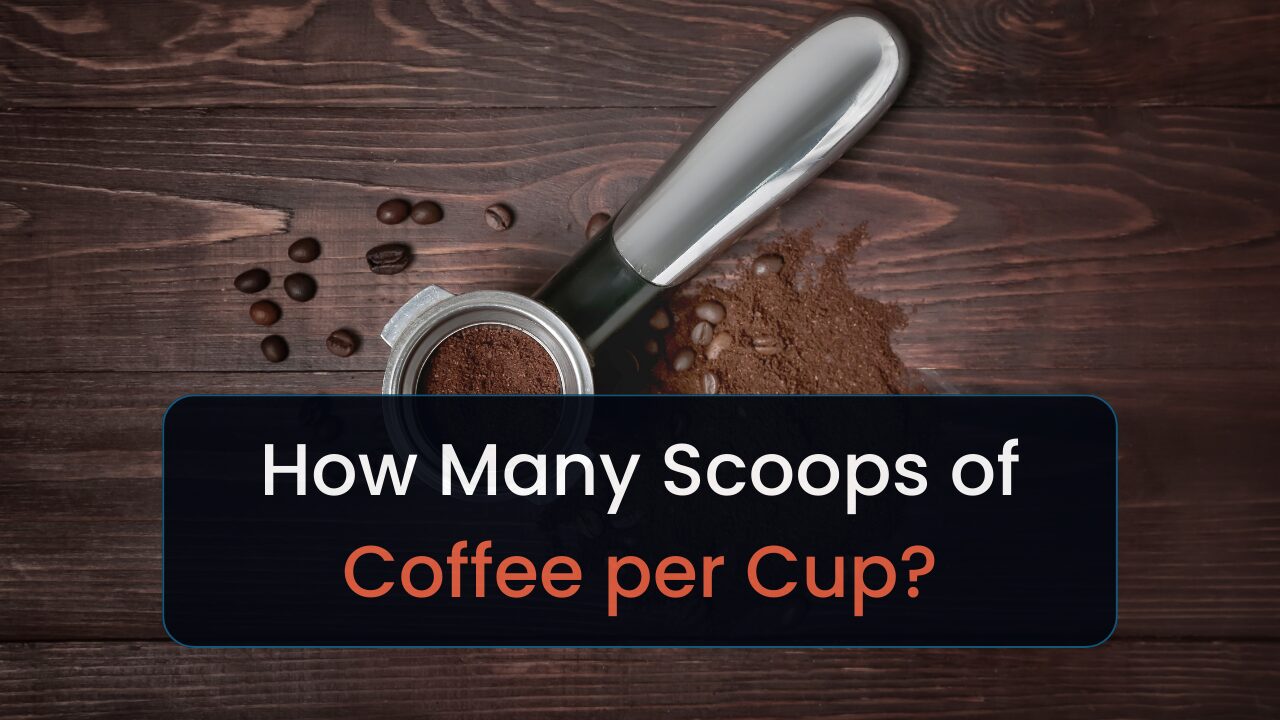
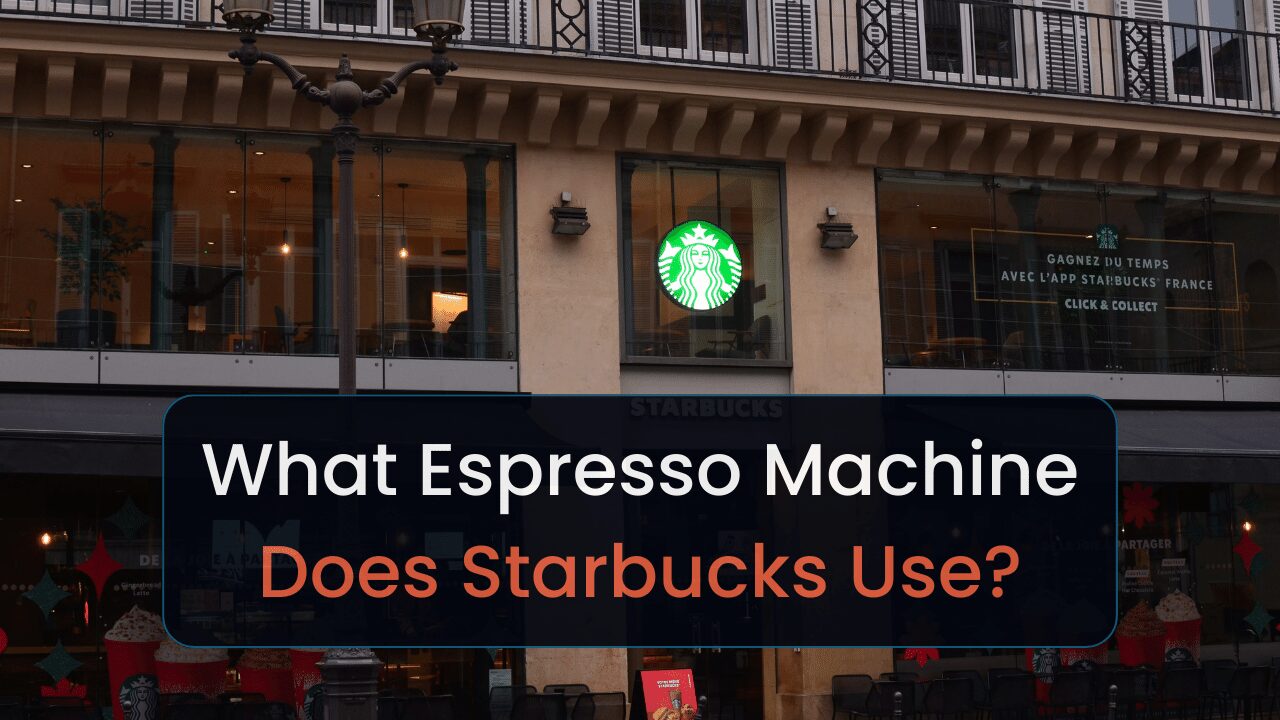
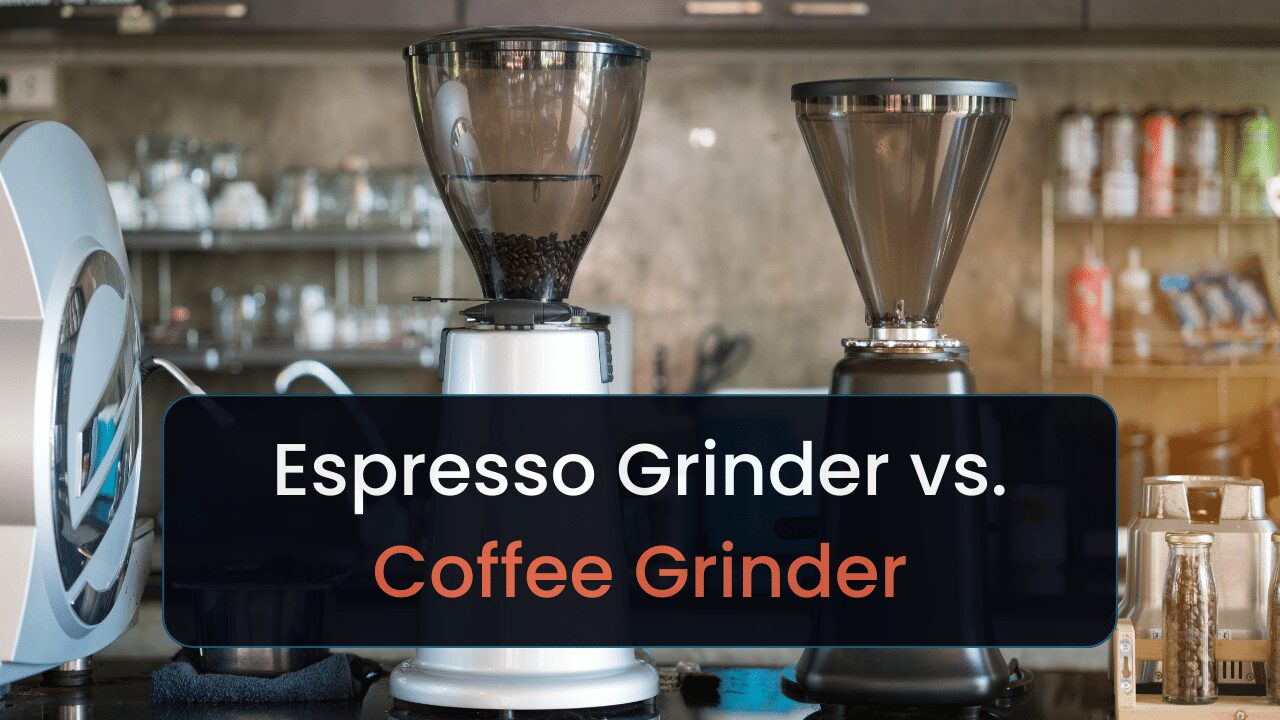
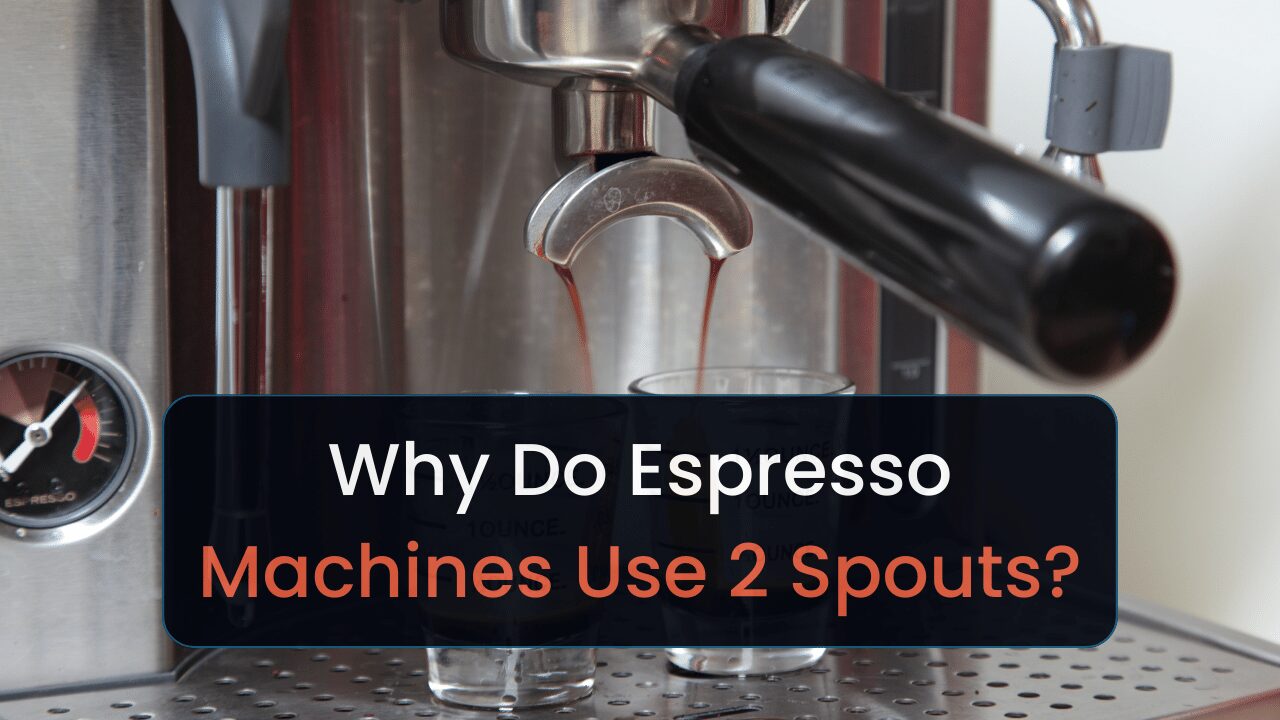
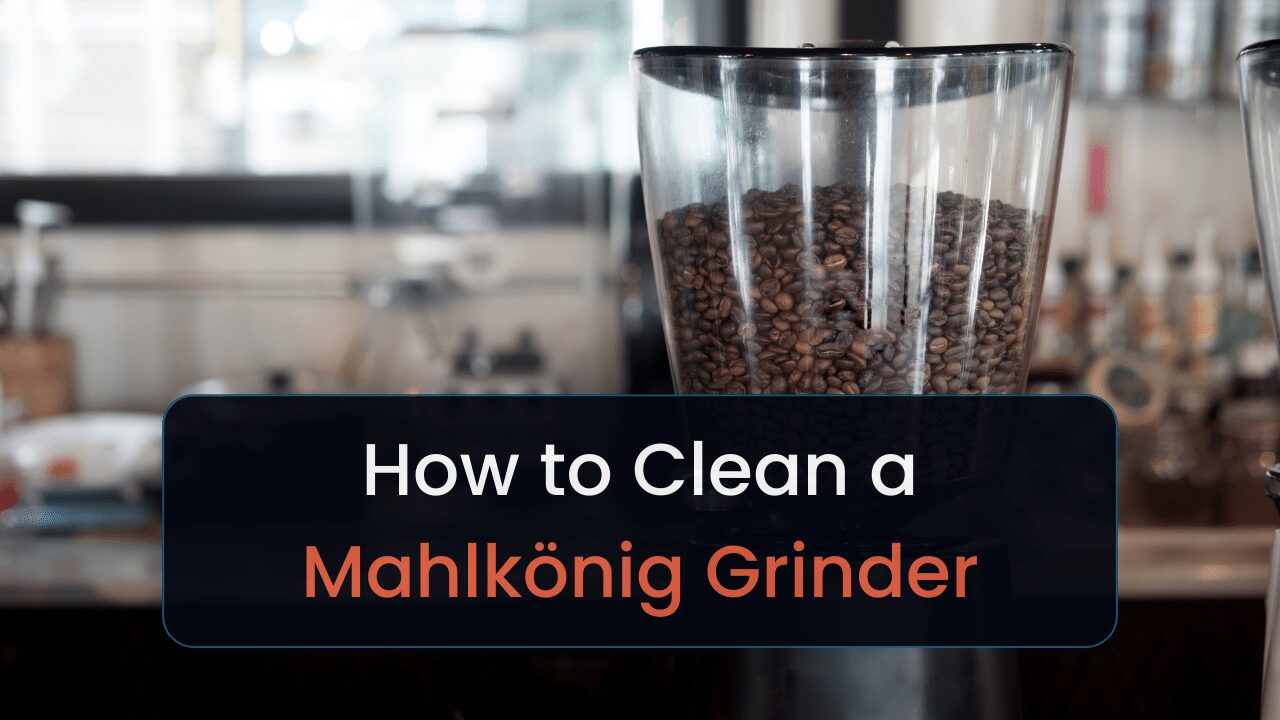
Are there any units that allow the frothing wand to tip down I now make only one cup after my husband’s passing and I’m having a hard time frothing so little mil with my current machine because the wand rotates but it doesn’t drop down to go lower towards the countertop k
Hey Peggy,
Based on your needs, the Breville Bambino (not the Plus version) could be a great choice for your espresso machine. It’s compact and efficient, with a steam wand that is capable of frothing smaller quantities of milk effectively.
Let me know if you have any more questions!
Best overall description of the variables that go into espresso making I have found for the uninitiated; and I have been looking for more that 20 hours. Bravo !
Thanks for that comment Dennis. I put a lot of effort into the article. So hearing this brings a smile to my face 🙂